Think of your title tag as your digital handshake on Google. It’s that one line of text that convinces someone to visit your page instead of scrolling past. While it may seem small, a great title is your secret weapon for standing out, boosting your rankings, and getting more clicks.
Its job isn’t to be the main heading on your page—that’s the H1. Its sole purpose is to earn a click from the search results.
Mastering this skill, known as Title Tag Optimization, is a fundamental part of any effective SEO service. It’s a core component of on-page SEO. This guide is all about it. We’ll walk you through everything you need to know, from getting the length right and using keywords smartly to writing titles that people genuinely want to click. You’ll also learn how to spot and fix common mistakes and ensure your titles stay effective, even as AI continues to change the search landscape.
The Anatomy of a Perfect Title Tag
Creating a reasonable title tag is both an art and a science. You need to make it friendly for search engines and interesting enough for people to click. Here’s a simple breakdown of how to do both.
The Right Length: Think in Pixels, Not Characters
People often say to keep your title under 60 characters, but that’s not entirely true. Google doesn’t count characters; it measures pixels (the space your text takes up).
Some letters are wider than others. For example, an “m” takes more space than an “i.” That means a 55-character title might get cut off, while a 65-character one could fit perfectly. The safe limit is around 600 pixels.
If your title is too long, Google will shorten it with three dots (…), which can hide your most important words. To prevent this, check your title with a free SERP preview tool before you publish it.

Smart Keyword Placement
Where you put your keywords really matters.
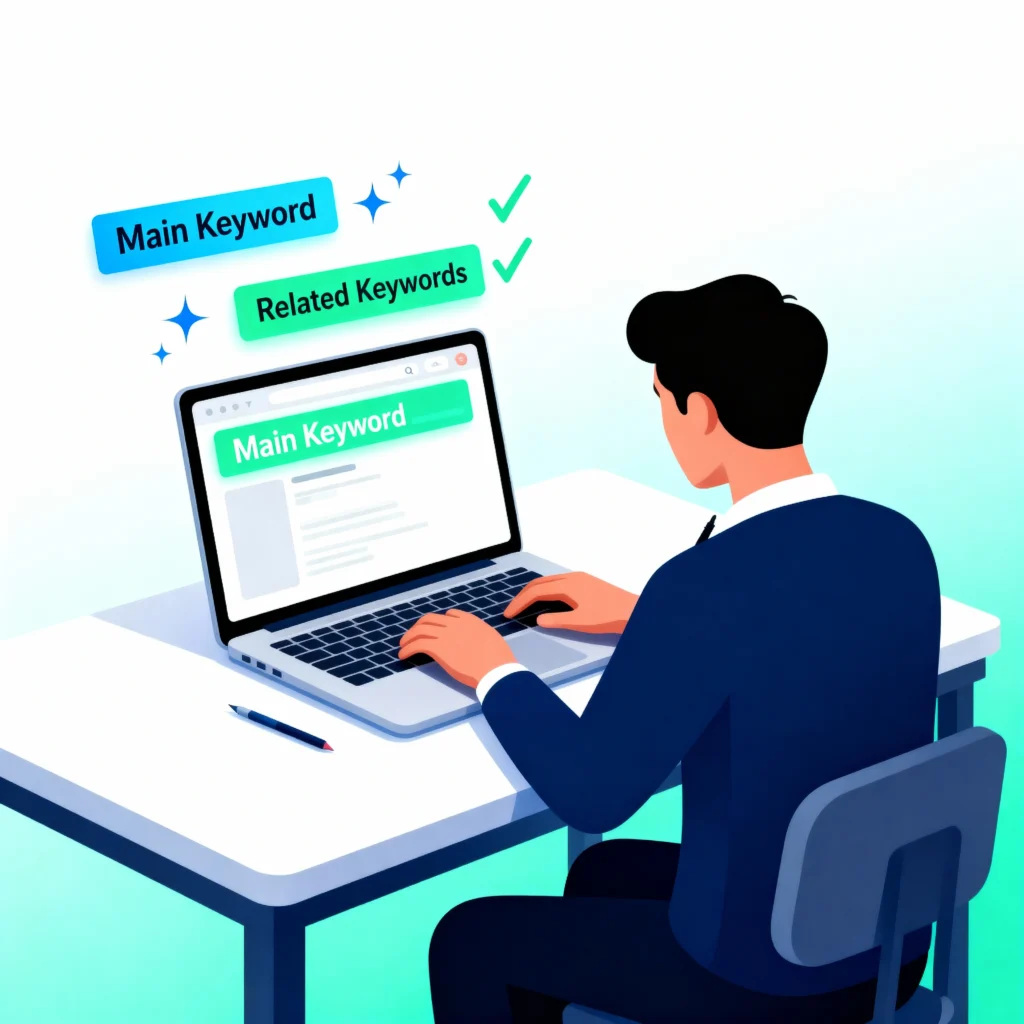
Put your main keyword first: Start your title with it. It helps both users and Google immediately understand what your page is about.
Add related keywords naturally: After your main keyword, include similar or related words. Ensure your title sounds natural and easy to read, without being overly stuffed with keywords. This helps your page show up for more searches without sounding robotic.
Writing for People: Make Them Want to Click
Once you have handled the technical aspects, focus on the human side , make people click your title.
Use action words: Start with verbs like “Learn,” “Get,” “Discover,” or “Find.” These make your title more exciting.
Use numbers: Numbers attract attention. For example, “10 Tips for Better Title Tags” or “2025/ 2026/ 2027 SEO Guide.” Numbers set a clear expectation for readers.
Ask a question: Questions spark curiosity in people. For example, “Is Your Title Tag Hurting Your SEO?” makes users want to find the answer.
Add something special: Use phrases like “Easy Guide,” “Step by Step,” or “Definitive Guide” to show what makes your content unique and helpful.

Using Your Brand Name

Adding your brand name can help build trust, but use it wisely. It’s best to place your brand name at the end of the title, separated by a vertical bar (|) or a hyphen (-). Example: “Title Tag Optimization Tips | WebTech.” This works excellently for homepages or about pages.
For long blog titles, consider omitting the brand name if space is limited. Focus on your keywords so Google shows the full title.
The Golden Rule: Every Title Must Be Unique
Every page on your website should have a unique title tag.
If two pages have the same title, Google gets confused about which to rank. This is called keyword cannibalization. It can hurt your SEO because your pages compete with each other.
Unique titles give each page a clear purpose and help both search engines and readers better understand your content.
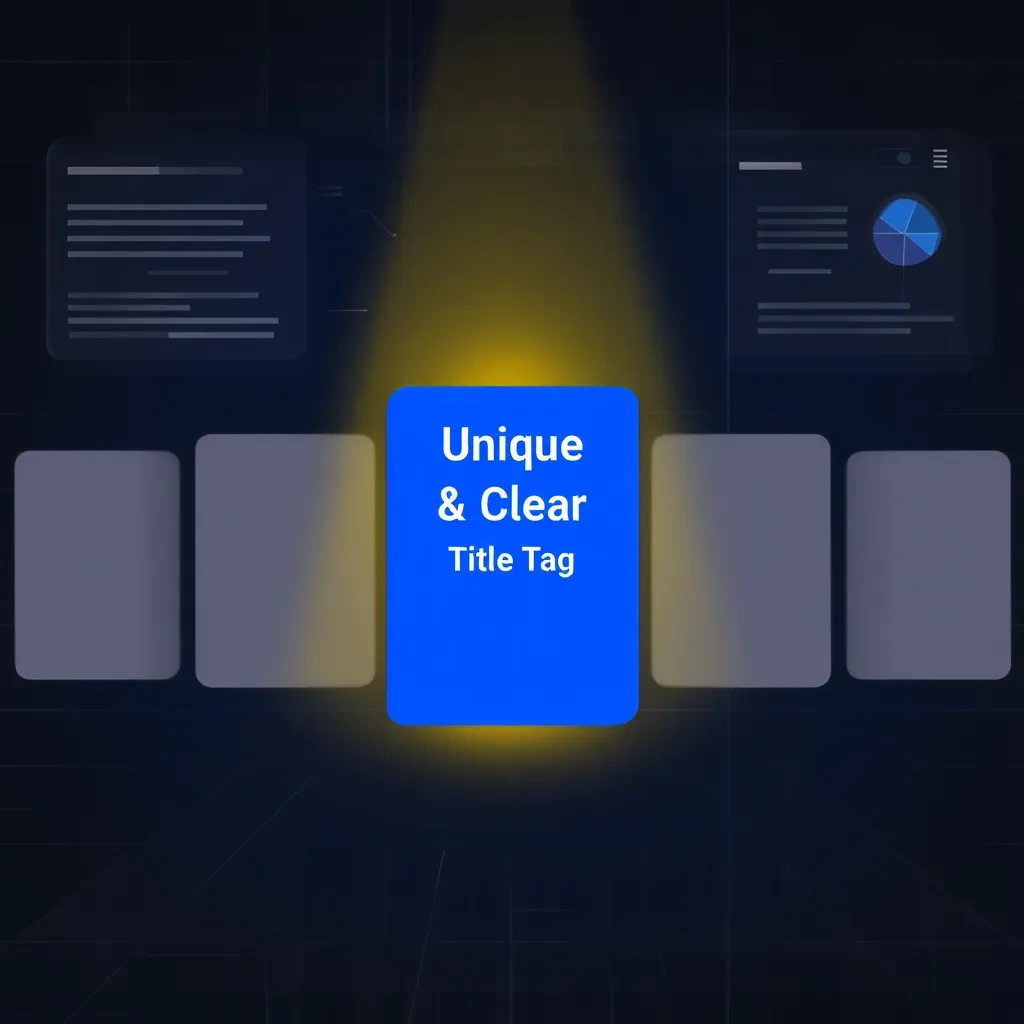
Advanced Strategies & Common Pitfalls
Adding keywords is only one part of optimizing title tags. It’s about making headlines that search engines like and that real people want to click on. In today’s fast-changing digital world, where AI-powered searches and tough competition keep growing, intelligent title tag optimization can decide whether your page ranks on the first page or gets lost on the second.
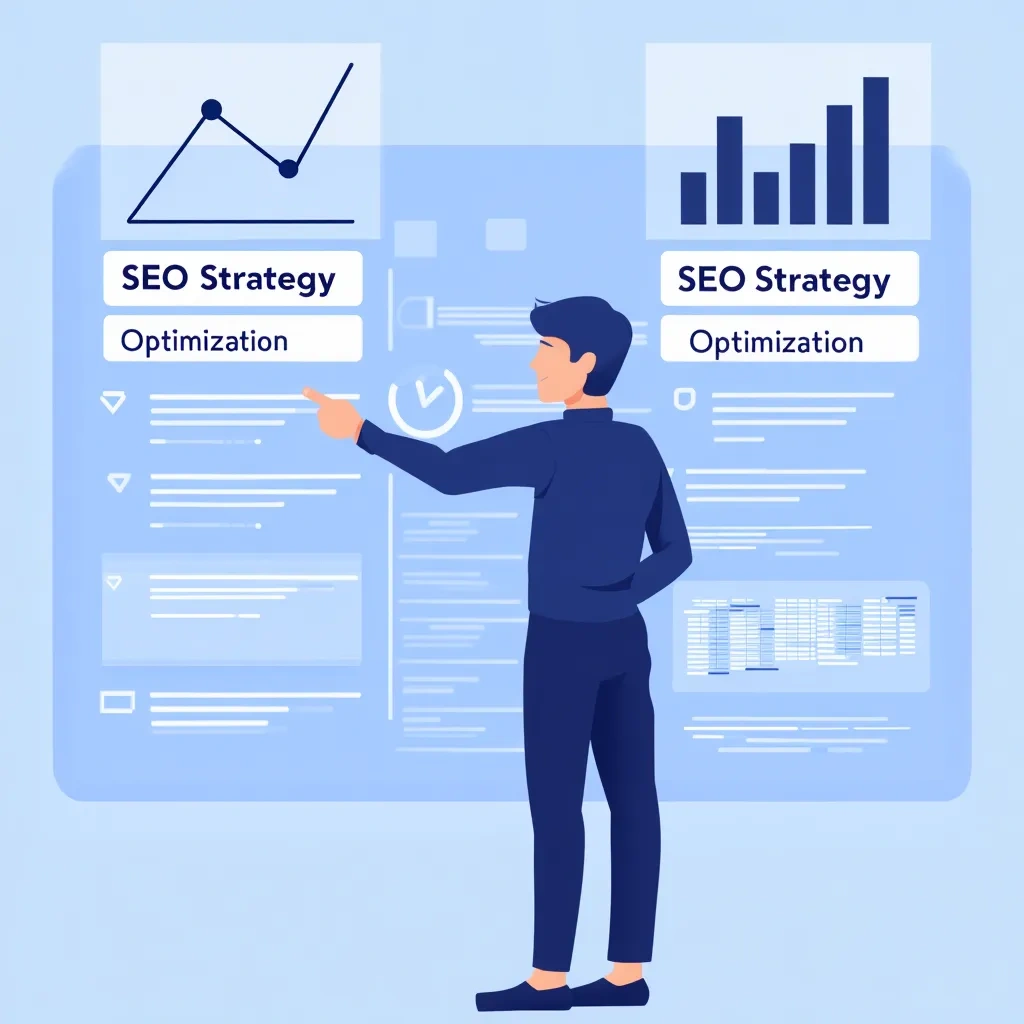
We’ll examine some practical strategies and common mistakes, drawing on real SEO experience and insights from Ahrefs and Semrush, to help you strengthen and make your title tags more effective.
Think Beyond the Basics – Pro-Level Optimization
Modern title tag optimization is a mix of creativity and technical knowledge. Now it’s time to move beyond the basics and learn advanced methods that help your page rank higher in search results (SERPs) and keep up with new search trends.
Use Title Modifiers
Adding words like “Best,” “Guide,” “Review,” or “Checklist” can make your title more specific and appealing to different search intents.
Example: Instead of writing “Title Tag Optimization,” write “Best Title Tag Optimization Guide for Beginners.” It instantly catches the attention of new learners.
According to SEMrush, small changes like these can increase your click-through rate (CTR) by 15–20%.

Study Your Competitors
Examine the titles of websites that are already ranking high. Use tools like Ahrefs, Semrush, or Google Search to analyze the words and structure they use, then craft a title that’s more valuable and unique.

Example:
If they use “Ultimate Title Tag Optimization Tips,” you can write “Simple Title Tag Optimization Strategies That Actually Work.”
This approach helps you find long-tail keywords, such as “Title Tag Optimization for Local SEO,” which make your content stand out.
Test Your Titles (A/B Testing)
Good title tag optimization means regular testing.
Use Google Search Console to track CTR data. Try changing one title at a time and see which one gets more clicks.
Example:
Before: “Title Tag Optimization Basics”
Test: “10 Quick Title Tag Optimization Wins”
Compare results after 2–4 weeks.
For websites in regions like .bd / .in / .pk / .us, always consider mobile users, since most traffic comes from mobile devices.
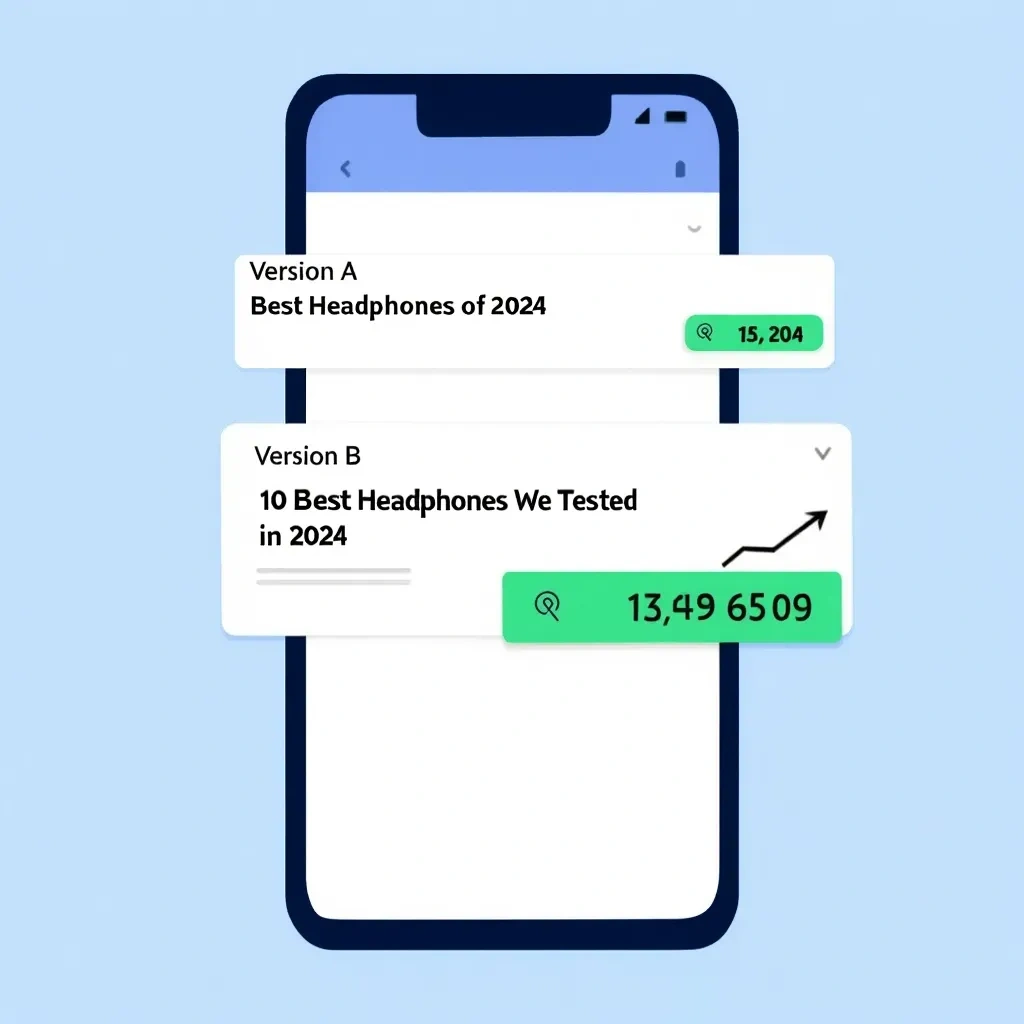
Google’s Title Rewriting – What It Is and How to Handle It
Sometimes Google rewrites your titles, a trend known as the “Titlepocalypse” (since 2021).
This typically occurs when Google believes your title does not align with the page content or user intent. According to Moz, this affects around 58% of search results.
Common Mistakes to Avoid
Keyword Stuffing:
Using too many keywords in a title makes it sound unnatural and unappealing to
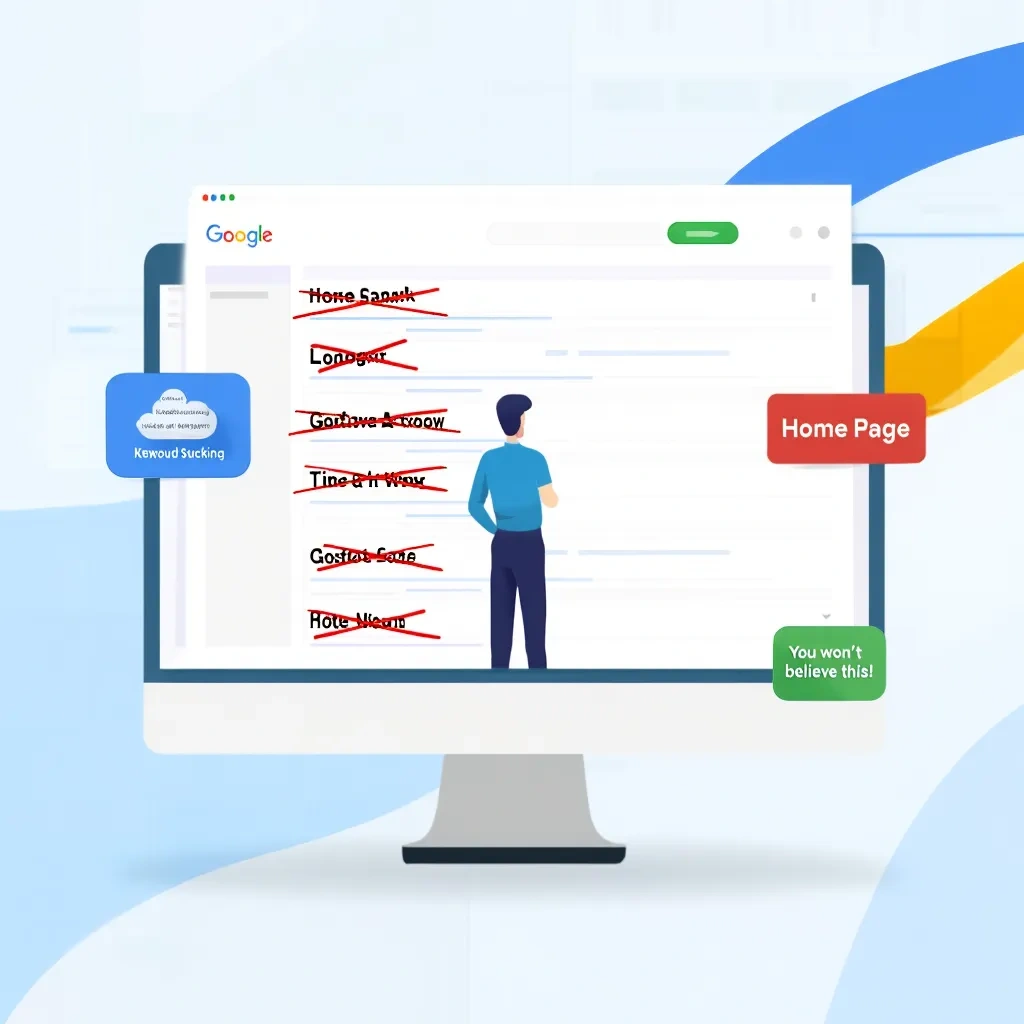
Readers. Keep your title concise, natural, and focused on the main topic, ensuring it remains Google-friendly and easy to read.
Generic Titles:
Avoid titles like “Home Page” or “New Post,” as they don’t describe the content or purpose of the page. Use clear, specific titles that convey to both users and search engines what the page is about.
Clickbait Titles:
Overly dramatic titles such as “You Won’t Believe This SEO Secret!” can damage your credibility. Instead, use titles that are honest, informative, and engaging—this builds trust and attracts the right audience, especially for eCommerce sites.
Avoid these mistakes to optimize your title tags effectively and maintain a strong search engine performance over the long term.
The Pro’s Toolkit: Auditing and Fixing Titles at Scale
So, you’ve learned the rules of crafting a great title. But how do you apply this to a website with hundreds, or even thousands, of pages? Checking them one by one would be a nightmare. This is where you shift from theory to practice and adopt the same systematic approach the pros use.
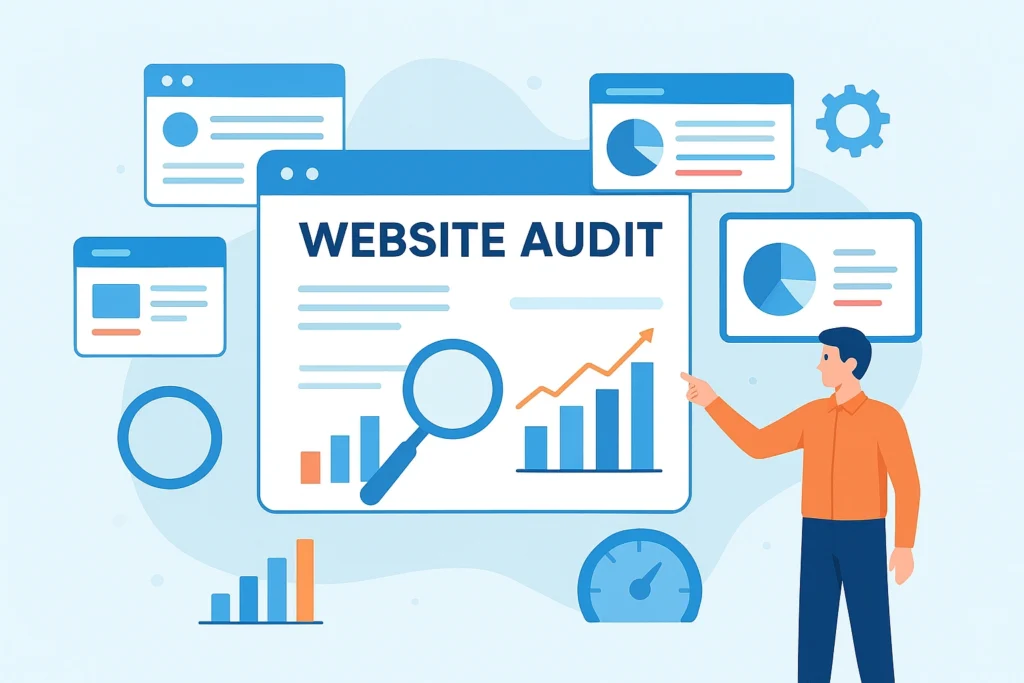
Finding and Fixing Issues Across Your Entire Site
To tackle title tags at scale, you need a website crawler. Think of these tools as your tireless assistants that scan every single page of your site and report back with a neat to-do list. When you talk about using industry-standard tools like Screaming Frog, Ahrefs, or Semrush, you show you know what you’re doing.
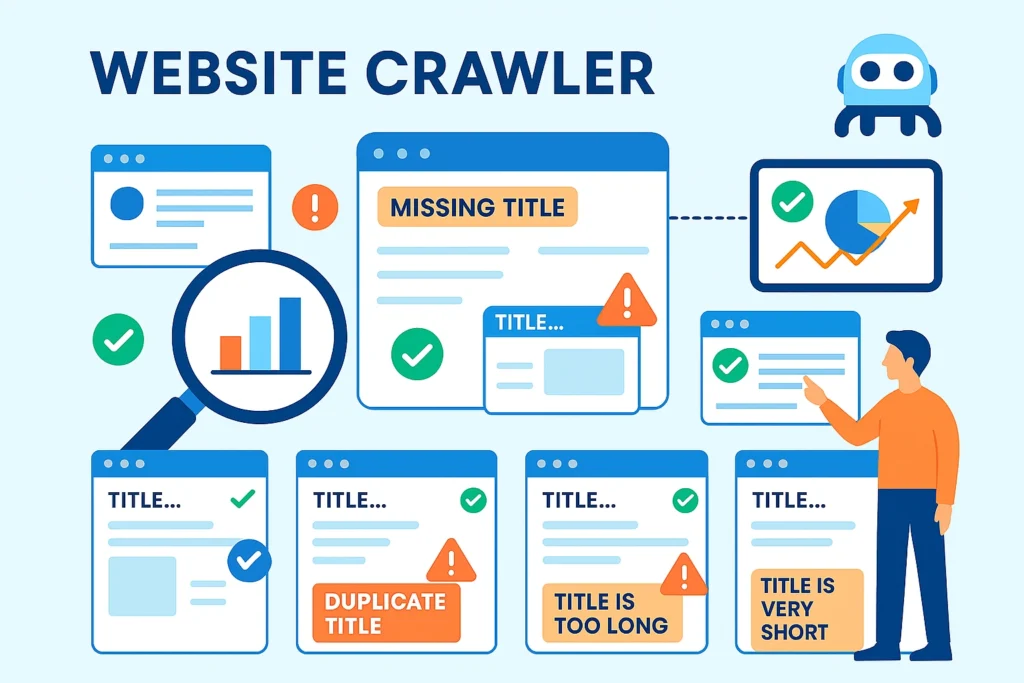
These are the heavy lifters that instantly flag critical title tag problems, such as:
- Pages with missing titles entirely.
- Duplicate titles that confuse Google.
- Titles that are too long are getting cut off.
- Titles that are too short waste valuable SEO real estate.
A Simple 4-Step Workflow
Once you run a crawl and get your report, the process is refreshingly simple.
Title Tag Audit & Fix Flowchart
Use a crawler like Screaming Frog, Ahrefs, or Semrush to scan all pages.
Find missing, duplicate, too long, or too short title tags in the report.
Focus on high-value pages: homepage, key service pages, or high-traffic posts.
Update titles to be unique, clear, keyword-focused, and pixel-perfect.
The Final Check: Previewing Your Titles
Before you hit that “update” button, there’s one last crucial step: previewing your title. You need to see exactly how it will look to a user searching on Google.
This is where free SERP preview tools come in handy. Tools from places like Moz, or the one built right into the Yoast SEO plugin are perfect for this. You paste in your new title, and it shows you a live preview, instantly indicating whether it fits within the pixel limit.
It’s a two-second check that prevents the headache of seeing your perfectly written title get awkwardly cut off in the search results.

The Future of Title Tags
With AI features like Google’s Overviews shaking up the search results, it’s fair to ask: do title tags even matter anymore?
The short answer is yes. In fact, they might be more critical than ever.
Thriving in the Age of AI Search
Think of it this way: AI is trying to find the most straightforward, most direct answer to a question. Your title tag is the first and most obvious clue you can give.
When your title directly asks a question or makes a straightforward statement, you’re essentially raising your hand and telling the AI, “The answer is right here.” This makes your content a prime candidate for being featured in those AI-generated summaries at the top of the page. Clear, concise, and question-answering titles are no longer just a good idea—they’re a strategic advantage.
Why the Fundamentals Will Always Win
At the end of the day, the look of Google’s search page will continually change. What won’t change is its core mission: connecting a person’s question to the best possible answer.
That’s why the fundamentals of a great title are future-proof. A title that is clear, honest, and genuinely helpful will always win. Instead of chasing the latest algorithm trick, focus on serving the user. If you do that, your titles will continue to work for you, regardless of any future changes.
FAQ
Why is title tag optimization so important?
t’s crucial because it’s a direct ranking factor, the first thing users see in search results, and it heavily influences whether someone clicks on your page.
How long should a title tag be?
Should I include my brand name in the title tag?
How can I stop Google from rewriting my titles?
Does a longer, truncated title hurt my rankings?
No, the keywords in the hidden part of a long title still count for ranking purposes. However, a truncated title can hurt your click-through rate because users can’t read the full message.
How Do Title Tags Affect CTR and Rankings in Title Tag Optimization?
Optimized titles can lift CTR by 15-30% (Semrush studies) by promising value, indirectly improving rankings via NavBoost (click data). For title tag optimization, focus on power words, numbers, and questions to stand out. Ahrefs blogs and X threads (e.g., @nathangotch on on-page basics) often field “Do titles really impact SEO?”—yes, they’re a direct signal for relevance and user engagement.
Closing remarks
The title tag proves that even small SEO changes can deliver significant results. You now have the blueprint to craft titles that don’t just rank, but also get clicked. While you can start applying these tips today, a full-site overhaul requires time and expertise. Ready to see real results without the heavy lifting?
Contact the experts at seoservices.com.bd for a free consultation. Let’s turn your titles into your most powerful ranking asset.

